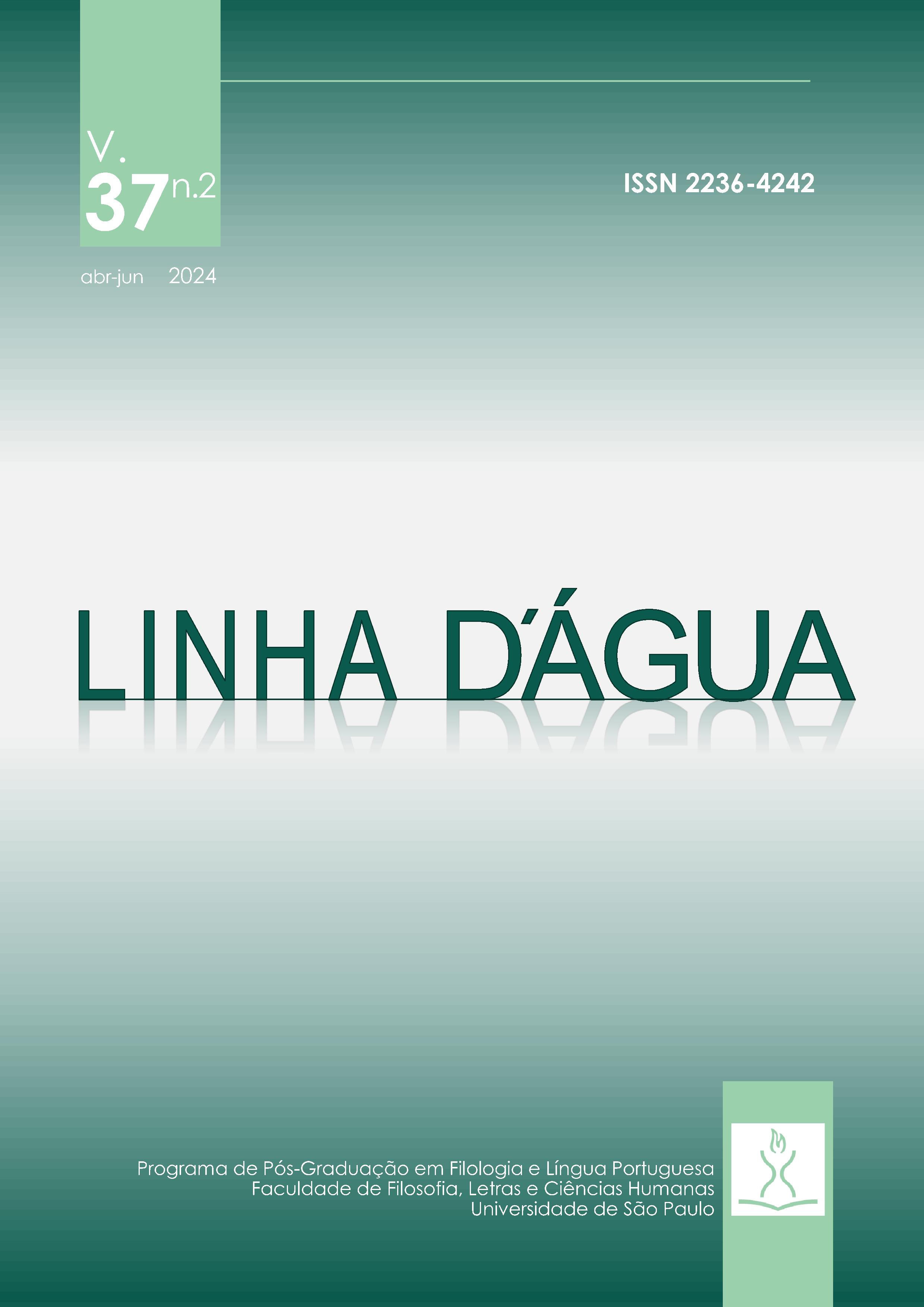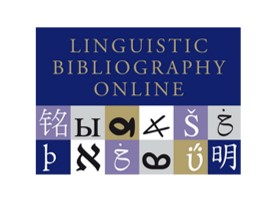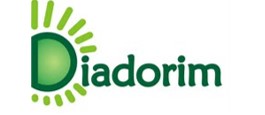Melhorar o letramento em saúde de migrantes nos cursos de línguas – Lições aprendidas com uma análise qualitativa de manuais escolares
DOI:
https://doi.org/10.11606/issn.2236-4242.v37i2p107-135Palavras-chave:
Educação de adultos, Empoderamento, Imigrantes, Letramento em saúde, Segunda línguaResumo
Programas de letramento em saúde (LS) para grupos vulneráveis com baixo LS, como migrantes e refugiados, procuram reduzir desigualdades em saúde. Cursos de educação básica para adultos e de segunda língua (CSL) são especialmente eficazes. Contudo, há poucas evidências empíricas sobre a promoção do LS em CSL. Este estudo buscou compreender melhor a promoção do LS analisando materiais de CSL, derivando melhores práticas e informando programas inovadores. Realizamos um estudo de escopo com busca sistemática em sete bases de dados acadêmicas e na literatura cinzenta. Identificamos 21 manuais elegíveis e analisamos qualitativamente seu conteúdo, teorias, princípios didático-metodológicos e a relação entre linguagem e saúde. Há diversas maneiras de promover o LS em CSL, com currículos que abordam temas de saúde como consultas médicas, nutrição, atividade física, saúde mental e social. Teorias de três disciplinas são aplicadas, e métodos diversos visam habilidades linguísticas: receptivas, produtivas, interativas e de defesa. Três abordagens principais emergiram: linguagem para saúde, informação sobre saúde sobre e habilidades para a saúde, cada uma unicamente interligadas em cada manual. Nenhum outro ambiente educacional é tão abrangente, inovador e promissor quanto o CSL quando implementado por equipes interdisciplinares.
Downloads
Referências
AHRQ. (2015). Health Literacy Universal Precautions Toolkit 2nd Edition: Use the Teach-Back Method: Tool #5. https://www.ahrq.gov/professionals/quality-patient-safety/quality-resources/tools/literacy-toolkit/healthlittoolkit2-tool5.html
Altgeld, T. (2018). Ergebnisbericht – Bestandsaufnahme von Interventionen (Modelle guter Praxis) zur Gesundheitsförderung und Prävention bei Menschen mit Migrationshintergrund. https://www.gkv-buendnis.de/fileadmin/user_upload/Publikationen/Bestandsaufnahme_Migration_Altgeld_2018.pdf
Anderson, L. W. (2009). A taxonomy for learning, teaching, and assessing: A revision of Bloom's taxonomy of educational objectives (Abridged ed. [Nachdr.]. Longman.
Andrulis, D. P., & Brach, C. (2007). Integrating Literacy, Culture, and Language to Improve Health Care Quality for Diverse Populations. American Journal of Health Behavior, 31(Suppl 1), S122-33. https://doi.org/10.5555/ajhb.2007.31.supp.S122
Arksey, H., & O'Malley, L. (2005). Scoping studies: Towards a methodological framework. International Journal of Social Research Methodology, 8(1), 19–32. https://doi.org/10.1080/1364557032000119616
BAG. (2018). Unterrichtsmappe Gesundheit. https://www.bag.admin.ch/bag/de/home/themen/strategien-politik/nationale-gesundheitsstrategien/gesundheitliche-chancengleichheit/gesundheitskompetenz-von-benachteiligten-staerken/unterrichtsmappe-gesundheit-fuer-migranten.html
BAMF. (2021). Bericht zur Integrationskursgeschäftsstatistik für das Jahr 2020. https://www.bamf.de/SharedDocs/Anlagen/DE/Statistik/Integrationskurszahlen/Bundesweit/2020-integrationskursgeschaeftsstatistik-gesamt_bund.pdf?__blob=publicationFile&v=2
Batterham, R. W., Hawkins, M., Collins, P. A., Buchbinder, R., & Osborne, R. H. (2016). Health literacy: applying current concepts to improve health services and reduce health inequalities. Public Health, 132. https://doi.org/10.1016/j.puhe.2016.01.001
Berkman, N. D., Sheridan, S. L., Donahue, K. E., Halpern, D. J., Viera, A., Crotty, K., Holland, A., Brasure, M., Lohr, K. N., Harden, E., Tant, E., Wallace, I., & Viswanathan, M. (2011). Health literacy interventions and outcomes: An updated systematic review. Evid Rep Technol Assess (Full Rep), 199.
Bradby, H., Humphris, R., Newall, D., & Phillimore, J. (2015). Public health aspects of migrant health: a review of the evidence on health status for refugees and asylum seekers in the European Region. http://www.epgencms.europarl.europa.eu/cmsdata/upload/3a3f00c0-9a75-4c84-94ad-06e4bd2ce412/WHO-HEN-Report-A5-2-Refugees_FINAL_EN.pdf
CDC. (n.d.). National Health Education Standards. https://www.cdc.gov/healthyschools/sher/standards/index.htm
Chen, X., Goodson, P., & Acosta, S. (2015). Blending Health Literacy with an English as a Second Language Curriculum: A Systematic Literature Review. Journal of Health Communication, 20, 101–111. https://doi.org/10.1080/10810730.2015.1066467
Chicago City Wise. (2019). Health Literacy: Empowerment-Based Health Literacy Project. https://www.chicagocitywideliteracy.org/what-we-do/health-literacy/
CIWA. (2011). Health Talk: A Health Literacy Curriculum for English Language Learners developed by Calgary Immigrant Women’s Association (CIWA). http://library.copian.ca/series/health-talk-health-literacy-curriculum-english-language-learner
Cope, B., & Kalantzis, M. (2009). 'Multiliteracies': New Literacies, New Learning. http://newlearningonline.com/files/2009/03/M-litsPaper13Apr08.pdf
Cope, B., Kalantzis, M., & Bill Cope and Mary Kalantzis (Eds.). (2015). A pedagogy of multiliteracies: Learning by design. Palgrave Macmillan.
Council of Europe. (2007). From Linguistic Diversity to Plurilingual Education:Guide for the Development of Language Education Policies in Europe. Strasbourg. https://rm.coe.int/16806a892c
Council of Europe. (2018). Common European Framework of Reference for Languages: Learning, Teaching, Assessment: Companion Volume with new descriptors. Strasbourg. https://rm.coe.int/cefr-companion-volume-with-new-descriptors-2018/1680787989
Diehl, E. (2000). Grammatikunterricht: Alles für der Katz? Untersuchungen zum Zweitsprachenerwerb Deutsch. Reihe germanistische Linguistik: Vol. 220. Niemeyer.
Diehl, S. (2006a). An English as a Second Language Health and Wellness Curriculum: Instructor's Manual.
Diehl, S. (2006b). Expecting the best. An English as a Second Language Health and Wellness Curriculum. https://expectingthebest.org/
Doak, C. C., Doak, L. G., & Root, J. H. (2007). Teaching patients with low literacy skills (2nd ed.). J.B. Lippincott. https://cdn1.sph.harvard.edu/wp-content/uploads/sites/135/2012/09/doakchap1-4.pdf
Duncan, L. R., Martinez, J. L., Rivers, S. E., Latimer, A. E., Bertoli, M. C., Domingo, S., & Salovey, P. (2013). Healthy Eating for Life English as a second language curriculum: Primary outcomes from a nutrition education intervention targeting cancer risk reduction. Journal of Health Psychology, 18(7), 950–961. https://doi.org/10.1177/1359105312457803
Eichler, K. (2013). Migration und Gesundheit: Die „transnationale Familie“ als Raum für Reflexions- und Hybridisierungsprozesse. In T. Geisen, T. Studer, & E. Yıldız (Eds.), Migration, Familie und soziale Lage: Beiträge zu Bildung, Gender und Care (pp. 313–331). Springer VS. https://doi.org/10.1007/978-3-531-94127-1_16
Färber, C., Kama, N., & Linet, M. REFUGIUM: Rat mit Erfahrung: Flucht und Gesundheit Information Und Multiklikation. https://refugium.budrich.de/englisch/
Fernández-Gutiérrez, M., Bas-Sarmiento, P., Albar-Marín, M. J., Paloma-Castro, O., & Romero-Sánchez, J. M. (2018). Health literacy interventions for immigrant populations: A systematic review. International Nursing Review, 65(1), 54–64. https://doi.org/10.1111/inr.12373
Florida Literacy Coalition. (2014). Staying Healthy for Beginners: An English Learner's Guide to Health Care and Healthy Living. Teacher Guide. https://lincs.ed.gov/publications/pdf/StayingHealthyTeacherGuide2014.pdf
Folinsbee, S., Kraglund-Gauthier, W., Quigley, A., & Grégoire, H. (2007) Final Report on Adults with Literacy Challenges and Adult Immigrants and Refugees: Summary. Canadian Council on Learning. http://en.copian.ca/library/research/hlkc/lit_imm_ref_en/lit_imm_ref_en.pdf
Frank, L., Yesil-Jürgens, R., Razum, O., Bozorgmehr, K., Schenk, L., Gilsdorf, A., Rommel, A., & Lampert, T. (2017). Gesundheit und gesundheitliche Versorgung von Asylsuchenden und Flüchtlingen in Deutschland. Journal of Health Monitoring, 2(1), 24–47. https://doi.org/10.17886/RKI-GBE-2017-005
Freire, P. (1996, 1970). Pedagogy of the oppressed (New rev. ed.). Penguin Education. Penguin.
Freire, P. (1998). Pädagogik der Unterdrückten: Bildung als Praxis der Freiheit (101.-103. Tausend Juli 1998). rororo rororo-Sachbuch: Vol. 6830. Rowohlt.
Furlong, L. (2011). Charlottesville Adult Learning Center's Health Curriculum 2011. https://sites.google.com/a/adultslearn.org/health/health-curriculum---introduction
García O, Li W. (2014). Translanguaging: Language, bilingualism and education / Ofelia Garcia and Li Wei. Basingstoke, Hampshire: Palgrave Macmillan.
Goethe-Institut. (2016). Rahmencurriculum für Integrationskurse Deutsch als Zweitsprache. München. https://www.bamf.de/SharedDocs/Anlagen/DE/Downloads/Infothek/Integrationskurse/Kurstraeger/KonzepteLeitfaeden/rahmencurriculum-integrationskurs.pdf?__blob=publicationFile
Griesshaber, W. (2013). Die Profilanalyse für Deutsch als Diagnoseinstrument zur Sprachförderung. https://www.uni-due.de/imperia/md/content/prodaz/griesshaber_profilanalyse_deutsch.pdf
Ha Dinh, T. T., Bonner, A., Clark, R., Ramsbotham, J., & Hines, S. (2016). The effectiveness of the teach-back method on adherence and self-management in health education for people with chronic disease: A systematic review. JBI Database of Systematic Reviews and Implementation Reports, 14(1), 210–247. https://doi.org/10.11124/jbisrir-2016-2296
Harsch, S. (2022). Health Literacy as a Situational, Social Practice in Context, Insights Gained from Three Research Projects Among Vulnerable Groups [Doctoral Thesis]. University of Education Freiburg, Freiburg, Germany. https://doi.org/10.5281/zenodo.7623831
Harsch, S. (2023). Promoting Health Literacy among LESLLA Learners: Empirical Findings and Practical Implications. LESLLA Symposium Proceedings, 17(1), 57–75. https://doi.org/10.5281/zenodo.8075693
Harsch, S., & Bittlingmayer, U. H. (2020a). Conceptualizing health literacy promotion in second-language courses based on a realistic review. European Journal of Public Health, 30(Supplement_5). https://doi.org/10.1093/eurpub/ckaa166.446
Harsch, S., & Bittlingmayer, U. H. (2020b). State-organized Health Education in Germany - Health Literacy Promotion within Health Compromising Regulations. Socialmedicinsk Tidskrift, 97(3), 454-466. https://socialmedicinsktidskrift.se/index.php/smt/issue/view/153/showToc
Harsch, S., & Bittlingmayer, U. H. (2024). Advancing the health literacy of migrants in second-language courses: Realist review. International Health Trends and Perspectives, 4(1), 40-67.
Harsch, S., Jonasson, L., & Stolwijk, L. (2021). Förderung von Gesundheitskompetenz von zugewanderten Menschen in Zweitsprachkursen – Umsetzung, Begrenzung und Potenziale in Deutschland und weltweit: [Promoting health literacy of migrants in second-language courses - current situation, limitations and potential in Germany and around the world]. In K. Rathmann, K. Dadaczynski, O. Okan, & M. Messer (Eds.), Gesundheitskompetenz. Springer Berlin Heidelberg. https://doi.org/10.1007/978-3-662-67055-2_123
Hattie, J. (2010). Visible learning: A synthesis of over 800 meta-analyses relating to achievement (Reprinted.). Routledge.
Hohn, M. D. (1997). Empowerment Health Education in Adult Literacy: A Guide for Public Health and Adult Literacy Practitioners, Policy Makers and Funders. https://www.researchgate.net/publication/234562307_Empowerment_Health_Education_in_Adult_Literacy_A_Guide_for_Public_Health_and_Adult_Literacy_Practitioners_Policy_Makers_and_Funders_Literacy_Leaders_Fellowship_Program_Reports_Volume_III_Number_4_Part
IOM. (2017). Vulnerability and resilience: 2nd Global Consultation on Migrant Health: Resetting the agenda. IOM. https://www.iom.int/sites/g/files/tmzbdl486/files/our_work/DMM/Migration-Health/Vulnerability%20and%20Resilience%20paper%20excerpts_%20final.pdf
IOM. (2021). World Migration Report 2020. https://publications.iom.int/system/files/pdf/wmr_2020.pdf
IROHLA. (2015). Ask me three. http://healthliteracycentre.eu/wp-content/uploads/2015/11/FDF-Int19_Ask-Me-3.pdf
Kairies, J. (Ed.). (2013). Literacy programmes with a focus on women to reduce gender disparities: Case studies from UNESCO Effective Literacy and Numeracy Practices Database (LitBase): Http://www.Unesco.Org/uil/litbase. UNESCO Institute for Lifelong Learning. http://unesdoc.unesco.org/images/0022/002225/222588e.pdf
KQED Education Network. (n.d.). Language 911. https://a.s.kqed.net/pdf/education/educators/esl/lang911-entireguide.pdf
Kreuter, M. W., Lukwago, S. N., Buscholtz, D. C., Clark, E. M., & Sanders-Thompson, V. (2003). Achieving Cultural Appropriateness in Health Promotion Programs: Targeted and Tailored Approaches. Health Education & Behavior, 30(2), 133–140. https://www.researchgate.net/profile/Matthew_Kreuter/publication/10805547_Achieving_Cultural_Appropriateness_in_Health_Promotion_Programs/links/004635151c54dceb43000000.pdf
Kuckartz, U. (2012). Qualitative Inhaltsanalyse: Methoden, Praxis, Computerunterstützung. Beltz-Juventa.
Lazarus, R. S., & Folkman, S. (1984). Stress, Appraisal, and Coping. Springer Publishing Company. https://books.google.de/books?id=i-ySQQuUpr8C
Lee, D. (2014). Teaching Health Literacy in Conjunction with ESL. Master's Projects and Capstones. https://repository.usfca.edu/capstone/94
Levy, S. R. (2008). Research-based Health Literacy Materials and Instruction Guide - Beginning ABE and ESL Levels. University of Illinois at Chicago Institute for Health Research and Policy. https://lincs.ed.gov/health/health-begin
Levy, S. R., Rasher, S., Carter, S., Harris, L., Berbaum, M., Mandernach, J., Bercovitz, L., & Martin, L. (2008). Health Literacy Curriculum Works for ABE Students. http://www.ncsall.net/fileadmin/resources/fob/2008/fob_9b.pdf
Lucey, M., Chaffee, M., Terry, D., La Marbe, J., Stone, B., & Wiencek, D. (2000). Mental Health and the ESL Classroom: A Guide for Teachers Working with Refugees.
Martinez, J. L., & Nystrom, S. (2010). Healthy Eating for Life. National Institut for Health.
Martinez, J. L., Rivers, S. E., Duncan, L. R., Bertoli, M., Domingo, S., Latimer-Cheung, A. E., & Salovey, P. (2013). Healthy eating for life: Rationale and development of an English as a second language (ESL) curriculum for promoting healthy nutrition. Translational Behavioral Medicine, 3(4), 426–433. https://doi.org/10.1007/s13142-013-0228-x
McCaffery, K. J., Morony, S., Muscat, D. M., Smith, S. K., Shepherd, H. L., Dhillon, H. M., Hayen, A., Luxford, K., Meshreky, W., Comings, J., & Nutbeam, D. (2016). Evaluation of an Australian health literacy training program for socially disadvantaged adults attending basic education classes: Study protocol for a cluster randomised controlled trial. BMC Public Health, 16, 454. https://doi.org/10.1186/s12889-016-3034-9
MDEACLS. (2001). Massachusetts Adult Basic Education Curriculum Framework for Health. http://www.doe.mass.edu/acls/frameworks/health.pdf
MetLife Foundation. (o.J.). Project SHINE. http://eslblogs.waketech.edu/resources/lesson-planning/health-lessons-from-external-sites/
MetLife Foundation. Unit One. The Doctor’s Office: Advanced Beginning.
National Academies of Sciences, Engineering, and Medicine (Ed.). (2017). Facilitating Health Communication with Immigrant, Refugee, and Migrant Populations Through the Use of Health Literacy and Community Engagement Strategies: Proceedings of a Workshop. https://www.nap.edu/download/24845 https://doi.org/10.17226/24845
National Center for the Study of Adult Learning and Literacy. (2007). NCSALL Health Literacy Study Circle+ Facilitators Training. Training Guide. National Center for the Study of Adult Learning and Literacy (NCSALL). National Center for the Study of Adult Learning and Literacy (NCSALL).
Nielsen-Bohlman, L., Panzer, A. M., & Kindig, D. A. (Eds.). (2004). Health Literacy: A Prescription to End Confusion. National Academies Press (US). https://doi.org/10.17226/10883
Nutbeam, D. (2000). Health literacy as a public health goal: a challenge for contemporary health education and communication strategies into the 21st century. Health Promotion International, 15(3), 259–267. https://doi.org/10.1093/heapro/15.3.259
Nutbeam, D. (2008). The evolving concept of health literacy. Social Science & Medicine (1982), 67(12), 2072–2078. https://doi.org/10.1016/j.socscimed.2008.09.050
Okan, O., Bauer, U., Levin-Zamir, D., Pinheiro, P., & Soerensen, K. (Eds.). (2019). International handbook of health literacy. Research, practice and policy across the lifespan. The Policy Press.
Okan, O., Paakkari, L., & Dadaczynski, K. (2020). Health literacy in schools. State of the art. Schools for Health in Europe. https://www.schoolsforhealth.org/sites/default/files/editor/fact-sheets/factsheet-2020-english.pdf
OÖ Gebietskrankenkasse (2014). Gesundheit! Arbeitsblätter für Deutsch- und Integrationskurse. https://www.gesundheitskasse.at/cdscontent/load?contentid=10008.693169&version=1448344821
ÖPGK. (2018). Ask me Three. https://oepgk.at/wp-content/uploads/2018/10/ask-me-3-weiterfuehrende-informationen-1.pdf
Paasche-Orlow, M. (2021). Health Literacy Tool Shed: A database of health literacy measures. https://healthliteracy.bu.edu/
Papen, U. (2009). Literacy, Learning and Health - A social practices view of health literacy. Literacy & Numeracy Studies, 16/17(2/1), 19–34.
Papen, U., & Walters, S. (2008). Literacy, learning and health. Research report. National Research and Development Centre for adult literacy and numeracy. https://dera.ioe.ac.uk/21966/1/doc_4323.pdf
Pelikan, J. (2019). Health-literate healthcare organisations. In O. Okan, U. Bauer, D. Levin-Zamir, P. Pinheiro, & K. Soerensen (Eds.), International handbook of health literacy. Research, practice and policy across the lifespan (pp. 539–554). The Policy Press. https://library.oapen.org/bitstream/handle/20.500.12657/24879/9781447344520_webpdf.pdf?sequence=1#page=564
Philippi, M., Melchert, P., & Renaud, D. (2018). Welche gesundheitsbezogenen Informationen brauchen Geflüchtete? Prävention Und Gesundheitsförderung, 13(3). https://doi.org/10.1007/s11553-018-0642-5
Quenzel, G., & Schaeffer, D. (2016). Health Literacy - Gesundheitskompetenz vulnerabler Bevölkerungsgruppen. Ergebnisbericht. Bielefeld. Universität Bielefeld. https://uni-bielefeld.com/fakultaeten/gesundheitswissenschaften/ag/ag6/publikationen/QuenzelSchaeffer_GesundheitskompetenzVulnerablerGruppen_Ergebnisbericht_2016.pdf
Robin, D. (2014). Applied linguistics as a resource for understanding and advancing health literacy. In H. E. Hamilton & W. S. Chou (Eds.), Routledge handbooks. The Routledge handbook of language and health communication (pp. 153–167). Routledge.
Rudd, R., & Moeykens, B. A. (1999). Adult Educators' Perceptions of Health Issues and Topics in Adult Basic Education Programs. NCSALL Reports, 8. https://www.worlded.org/WEIInternet/inc/common/_download_pub.cfm?id=16613&lid=3
Rudd, R., Soricone, L., Santos, M [Marciel], & Zobel, Emily, Smith, Janet (2005). Health Literacy Study Circles+ Introduction. https://www.worlded.org/WEIInternet/inc/common/_download_pub.cfm?id=16729&lid=3
Rudd, R., Zacharia, C., & Daube, K. (1998). Integrating Health and Literacy: Adult Educators' Experiences. NCSALL Reports, 5. https://files.eric.ed.gov/fulltext/ED427194.pdf
Ryan, M. E., Rossi, T., Macdonald, D., & McCuaig, L. (2012). Theorising a framework for contemporary health literacies in schools. https://eprints.qut.edu.au/48495/2/48495.pdf
Samerski, S. (2019). Health literacy as a social practice: Social and empirical dimensions of knowledge on health and healthcare. Social Science & Medicine (1982), 226, 1–8. https://doi.org/10.1016/j.socscimed.2019.02.024
Santos, M., Gorukanti, A. L., Jurkunas, L. M., Santos, M [Maricel], & Handley, M. (2018). The Health Literacy of U.S. Immigrant Adolescents: A Neglected Research Priority in a Changing World. International Journal of Environmental Research and Public Health, 15(10), 2108. https://doi.org/10.3390/ijerph15102108
Santos, M., Handley, M., Omark, K., & Schillinger, D. (2014). ESL participation as a mechanism for advancing health literacy in immigrant communities. Journal of Health Communication, 19 Suppl 2, 89–105. https://doi.org/10.1080/10810730.2014.934935
Schaeffer, D., Berens, E.‑M., Weishaar, H., & Vogt, D. (2017). Gesundheitskompetenz in Deutschland – Nationaler Aktionsplan ; Health literacy in Germany – national action plan. Gesundheitskompetenz in Deutschland – Nationaler Aktionsplan ; Health Literacy in Germany – National Action Plan.
Schmidt-Kaehler, S., Vogt, D., Berens, E.‑M., Horn, A., & Schaeffer, D. (2017). Gesundheitskompetenz. Verständlich informieren und beraten. Material- und Methodensammlung zur Verbraucher- und Patientenberatung für Zielgruppen mit geringer Gesundheitskompetenz. https://www.uni-bielefeld.de/gesundhw/ag6/downloads/Material-_und_Methodensammlung.pdf
Schouler-Ocak, M. (2017). Providing care for migrants and refugees. European Psychiatry, 41, S35. https://doi.org/10.1016/j.eurpsy.2017.01.165.
Schouler-Ocak, M., & Kumeyer, C. (2017). Study on Female Refugees: Abschlussbericht. https://female-refugee-study.charite.de/fileadmin/user_upload/microsites/sonstige/mentoring/Abschlussbericht_Final_-1.pdf
Simich, L. (2009). Health literacy and immigrant populations – policy brief. https://multiculturalmentalhealth.ca/wp-content/uploads/2020/10/10.1.1.545.5077.pdf
Singleton, K. (2003). Virginia Adult Education Health Literacy Toolkit. Virginia Adult Learning Resource Center, Virginia Commonwealth University, Richmond. https://www.valrc.org/toolkit/index.html
Singleton, K. (2012). VALRC: Literacy Toolkit Introduction Homepage. https://valrc.org/toolkit/intro.html
Sørensen, K., Pelikan, J. M., Röthlin, F., Ganahl, K., Slonska, Z., Doyle, G., Fullam, J., Kondilis, B., Agrafiotis, D., Uiters, E., Falcon, M., Mensing, M., Tchamov, K., van den Broucke, S., & Brand, H. (2015). Health literacy in Europe: Comparative results of the European health literacy survey (HLS-EU). The European Journal of Public Health, 25(6), 1053–1058. https://doi.org/10.1093/eurpub/ckv043
Sørensen, K., van Broucke den, S., Fullam, J., Doyle, G., Pelikan, J., Slonska, Z., & Brand, H. (2012). Health literacy and public health: A systematic review and integration of definitions and models. BMC Public Health, 12, 80. https://doi.org/10.1186/1471-2458-12-80
Soto Mas, F., Fuentes, B., Mein, E., Arnal, P., & Tinajero, J. (2013). Health Literacy & ESL Curriculum. MedEdPORTAL Publications. Advance online publication. https://doi.org/10.15766/mep_2374-8265.9420
Soto Mas, F., Schmitt, C. L., Jacobson, H. E., & Myers, O. B. (2018). A Cardiovascular Health Intervention for Spanish Speakers: The Health Literacy and ESL Curriculum. Journal of Community Health. Advance online publication. https://doi.org/10.1007/s10900-018-0475-3
Squiers, L., Peinado, S., Berkman, N., Boudewyns, V., & McCormack, L. (2012). The health literacy skills framework. Journal of Health Communication, 17 Suppl 3, 30–54. https://doi.org/10.1080/10810730.2012.713442
Street, B. V. (2014). Social Literacies: Critical Approaches to Literacy in Development, Ethnography and Education. Real Language Series. Taylor and Francis. http://gbv.eblib.com/patron/FullRecord.aspx?p=1702113
Thomas, A. (2004). Healthwize. Health Literacy Training Resource for Refuee and Other ESL Students. Victoria, Australien. http://www.foundationhouse.org.au/wp-content/uploads/2014/07/Healthwize.pdf
Trupin, J., Ford, D., & Shabaa, M. (n.d.). A Health Literacy Curriculum for ESOL learners (Beginner Level) | Queens Library. http://www.queenslibrary.org/services/health-info/english-for-your-health/teacher-beginner-level
UNHCR. (2022). Global Trends Forced Displacement in 2021. Copenhagen, Denmark. https://data.unhcr.org/en/documents/details/93791
Utech, J. L. (2005). Workplace Health and Safety ESOL Curriculum. http://www.umass.edu/roundtable/projects/Health-Safety-ESOL.pdf
Valero-Garces, C. (2014). Health, Communication and Multicultural Communities: Topics on Intercultural Communication for Healthcare Professionals. Cambridge Scholars Publishing. https://www.cambridgescholars.com/download/sample/61725
VHS Baden-Württemberg e.V. (2010). Gesundheit integrieren: Materialien zur Gesundheitsbildung für Kursleitende im Integrationskurs an Volkshochschulen. http://www.vhs-sprachenschule.de/de/integration-und-einbuergerung/gesundheit-integrieren-sw.pdf
Visscher, B. B., Steunenberg, B., Heijmans, M., Hofstede, J. M., Devillé, W., van der Heide, I., & Rademakers, J. (2018). Evidence on the effectiveness of health literacy interventions in the EU: A systematic review. BMC Public Health, 18(1), 1–12. https://doi.org/10.1186/s12889-018-6331-7
Vygotskij, L. S. (2002). Beltz-Taschenbuch Psychologie: Vol. 125. Denken und Sprechen: Psychologische Untersuchungen (J. Lompscher, & G. Rückriem, Eds.). Beltz.
Wagner, C. von, Steptoe, A., Wolf, M. S., & Wardle, J. (2009). Health literacy and health actions: A review and a framework from health psychology. Health Education & Behavior : The Official Publication of the Society for Public Health Education, 36(5), 860–877. https://doi.org/10.1177/1090198108322819
Wagner, T. (2019). Incorporating Health Literacy into English as a Second Language Classes. Health Literacy Research and Practice, 3(3 Suppl), S37-S41. https://doi.org/10.3928/24748307-20190405-02
Wallerstein, N., & Bernstein, E. (1988). Empowerment Education: Freire's Ideas Adapted to Health Education. Health Education Quarterly, 15(4), 379–394. https://doi.org/10.1177/109019818801500402
Wångdahl, J. (2017). Health literacy among newly arrived refugees in Sweden and implications for health and healthcare. COinS. http://urn.kb.se/resolve?urn=urn:nbn:se:uu:diva-333427
WHO. (1986). Ottawa Charta zur Gesundheitsförderung. https://www.euro.who.int/__data/assets/pdf_file/0006/129534/Ottawa_Charter_G.pdf?ua=1
WHO. (2006). Constitution of the World Health Organization. http://www.who.int/governance/eb/who_constitution_en.pdf?ua=1
WHO. (2013). Health Literacy. The Solid Facts. Geneva. http://www.euro.who.int/__data/assets/pdf_file/0008/190655/e96854.pdf
WHO. (2016). Shanghai Declaration on promoting health in the 2030 Agenda for Sustainable Development. https://www.who.int/healthpromotion/conferences/9gchp/shanghai-declaration.pdf?ua=1
WHO. (2018a). Health promotion for improved refugee and migrant health. (Technical guidance on refugee and migrant health). Copenhagen. http://www.euro.who.int/__data/assets/pdf_file/0004/388363/tc-health-promotion-eng.pdf?ua=1
WHO. (2018b). Report on the health of refugees and migrants in the WHO European Region: No PUBLIC HEALTH without REFUGEE and MIGRANT HEALTH. Copenhagen, Demark. WHO Regional Office for Europe. https://apps.who.int/iris/bitstream/handle/10665/311347/9789289053846-eng.pdf?sequence=1&isAllowed=y
WHO. (2021). Geneva Charter for Well-being. https://www.who.int/news/item/15-12-2021-10th-global-conference-on-health-promotion-charters-a-path-for-creating-well-being-societies
Wigglesworth, G. (2003). The kaleidoscope of adult second language learning: Learner, teacher and researcher perspectives. Research collection / National Centre for English Language Teaching and Research: Vol. 2. National Centre for English Language Teaching and Research. http://www.ameprc.mq.edu.au/docs/research_reports/research_collection/02_Kaleidoscope.pdf
Zanchetta, M. S., & Poureslami, I. M. (2006). Health literacy within the reality of immigrants' culture and language. Canadian Journal of Public Health = Revue Canadienne De Sante Publique, 97 Suppl 2, S26-30.
Downloads
Publicado
Edição
Seção
Licença
Copyright (c) 2024 Stefanie Harsch

Este trabalho está licenciado sob uma licença Creative Commons Attribution-NonCommercial 4.0 International License.
A aprovação dos manuscritos implica cessão imediata e sem ônus dos direitos de publicação para a Linha D'Água. Os direitos autorais dos artigos publicados pertencem à instituição a qual a revista encontra-se vinculada. Em relação à disponibilidade dos conteúdos, a Linha D'Água adota a Licença Creative Commons, CC BY-NC Atribuição não comercial. Com essa licença é permitido acessar, baixar (download), copiar, imprimir, compartilhar, reutilizar e distribuir os artigos, desde que para uso não comercial e com a citação da fonte, conferindo os devidos créditos autorais à revista.
Nesses casos, em conformidade com a política de acesso livre e universal aos conteúdos, nenhuma permissão é necessária por parte dos autores ou do Editor. Em quaisquer outras situações a reprodução total ou parcial dos artigos da Linha D'Água em outras publicações, por quaisquer meios, para quaisquer outros fins que sejam natureza comercial, está condicionada à autorização por escrito do Editor.
Reproduções parciais de artigos (resumo, abstract, resumen, partes do texto que excedam 500 palavras, tabelas, figuras e outras ilustrações) requerem permissão por escrito dos detentores dos direitos autorais.
Reprodução parcial de outras publicações
Citações com mais de 500 palavras, reprodução de uma ou mais figuras, tabelas ou outras ilustrações devem ter permissão escrita do detentor dos direitos autorais do trabalho original para a reprodução especificada na revista Linha D'Água. A permissão deve ser endereçada ao autor do manuscrito submetido. Os direitos obtidos secundariamente não serão repassados em nenhuma circunstância.
Como Citar
Dados de financiamento
-
Bundesministerium für Bildung und Forschung
Números do Financiamento 01EL1824A-E











